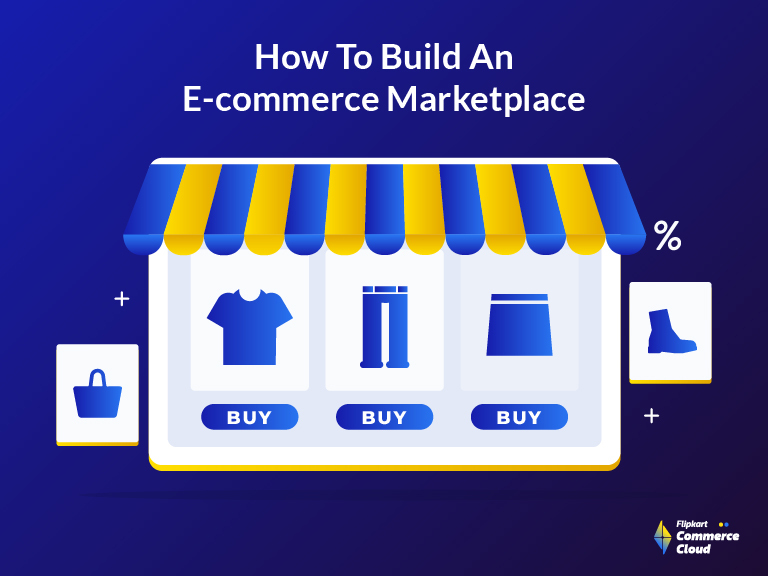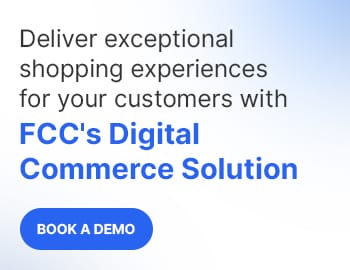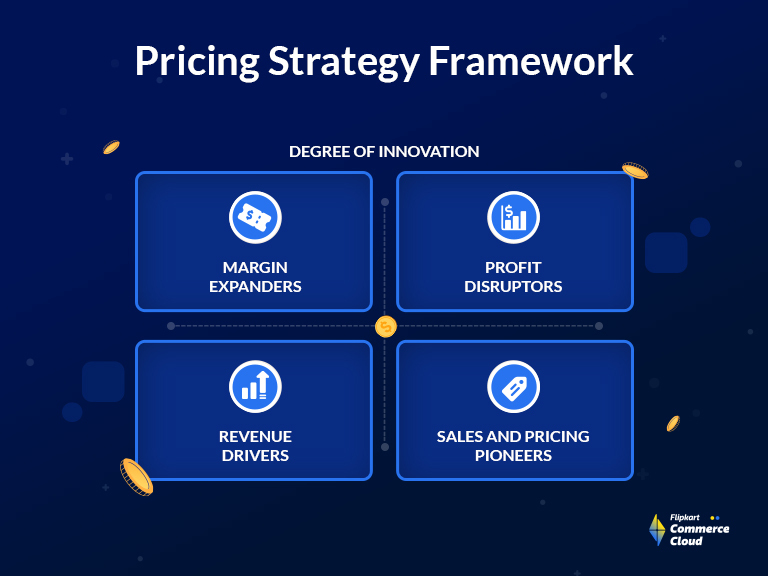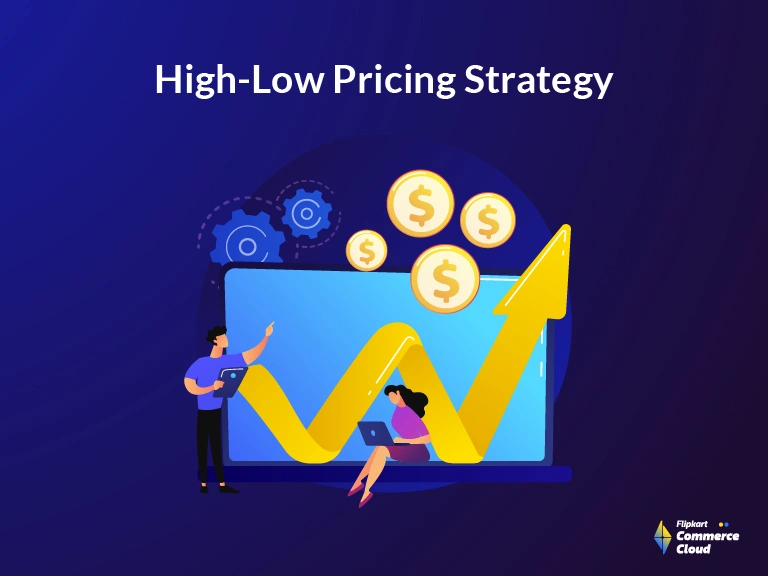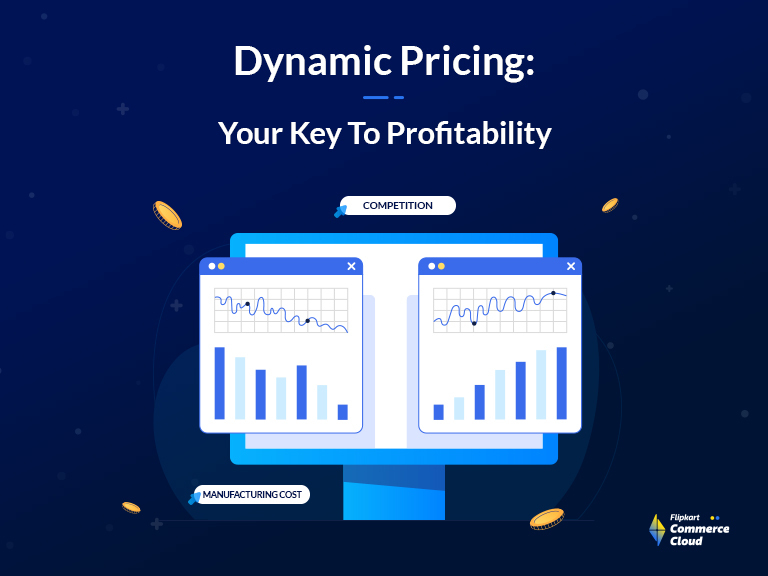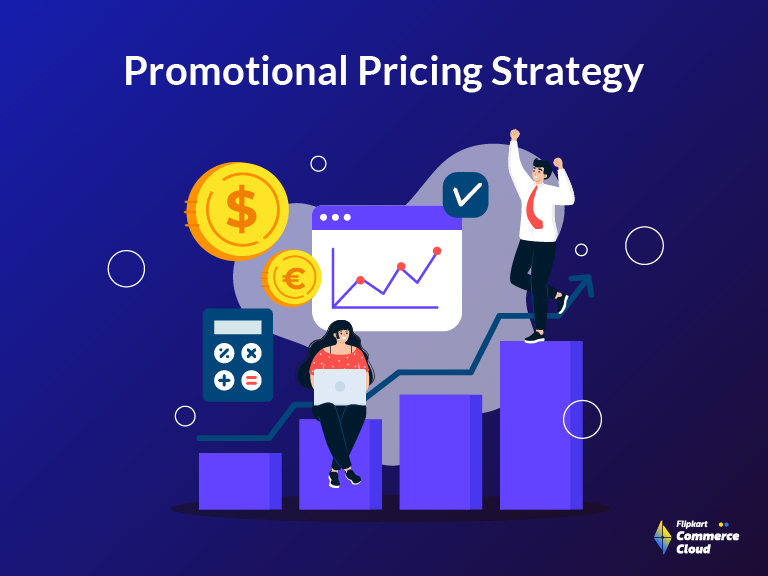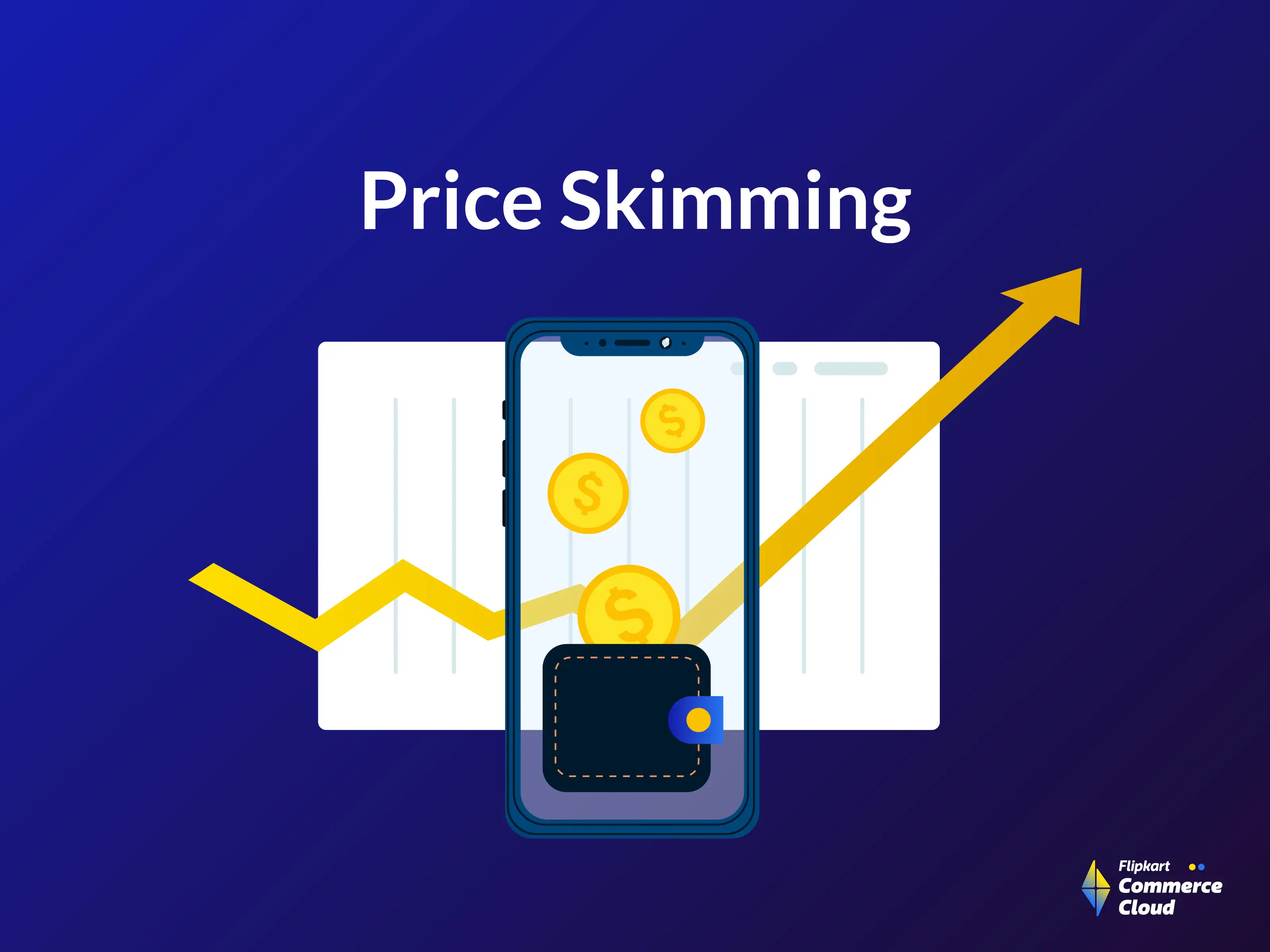A study by Shopify reveals that by the end of 2024, more than 21.2% of total retail sales will be completed online, resulting in the global E-commerce market value crossing $6.3 trillion. This data highlights the true potential of E-commerce marketplaces in the modern digital economy. As a retailer, building your own E-commerce marketplace can open a world of opportunities and boost your potential for growth and profitability.
Today, operating your own digital marketplace allows for greater control over your brand and customer interactions, enabling you to reach a broader audience. So, how do you tap into this interesting trend and build a robust E-commerce marketplace?
This blog covers the seven important steps in starting your own marketplace. Keep reading!
What are E-commerce Marketplaces?
An E-commerce marketplace is a digital platform that connects sellers with buyers. Here, multiple vendors can list and sell their products, and customers can browse, compare, and purchase these goods. The marketplace itself acts as a trusted intermediary, ensuring a seamless user experience and secure payment processing.
But why is the marketplace business model so popular? The answer lies in its scalability and reach. An E-commerce marketplace can cater to customers in new markets worldwide, breaking geographical barriers.
Take the example of Flipkart, a major E-commerce marketplace in India. Its success story is a great example of the potential of this business model. Flipkart started as an online bookstore and has now grown into a multi-billion-dollar enterprise. It presents an elaborate range of products across various categories featuring established brands alongside independent sellers.
Steps for Building an E-commerce Marketplace
Here are the seven steps that play a vital in shaping your e-commerce marketplace platform and ensuring its success:
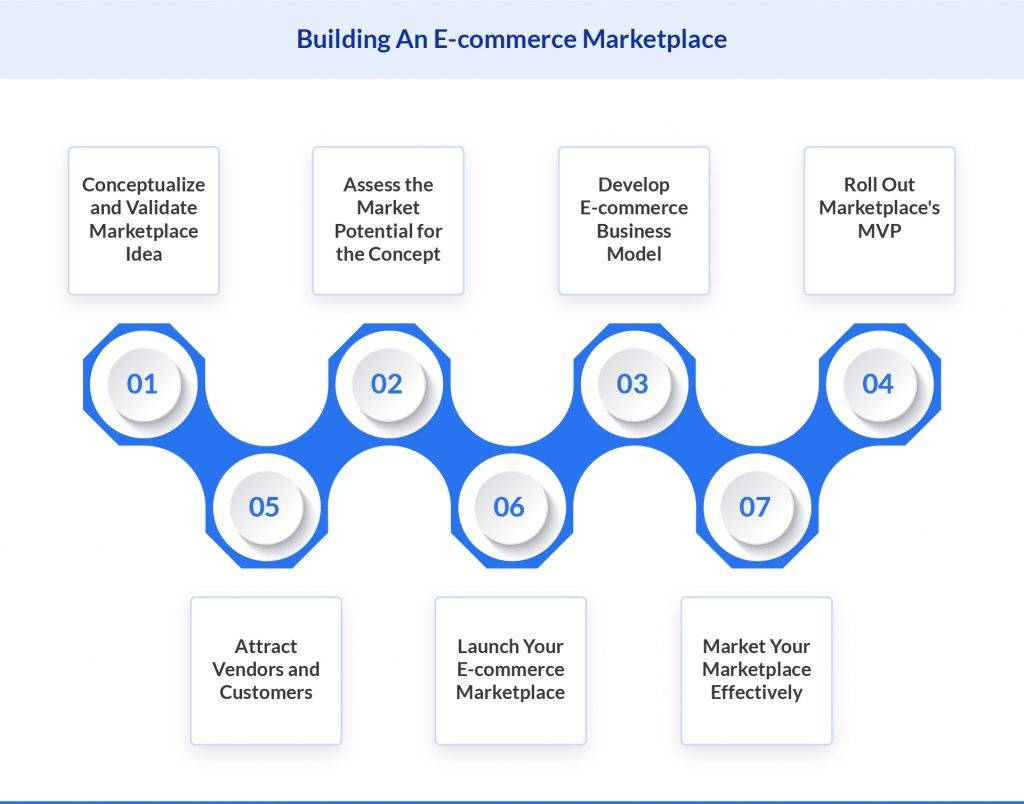
Step #1: Conceptualizing and Validating Your Marketplace Idea
Every successful marketplace begins with a unique and viable idea. It is the foundation upon which your entire platform will be built.
Brainstorming is your starting point. Think about what kind of products or services your online marketplace website will offer. Identify a niche that has not been saturated yet or find a unique angle in a popular category. Once you have a concept, it is time to validate it.
Validation involves testing your idea against the realities of the market, and you must conduct thorough research to validate your concept. Analyze competitor landscapes, identify target audience demographics, and evaluate the growth potential and market size. Look at existing marketplaces and identify gaps that your platform can fill. This step is crucial in determining whether your idea is feasible and has the potential to thrive.
Consider Walmart. It started with a unique idea to offer a wide range of everyday goods at consistently low prices. This strategy resonated with a broad customer base, and its later expansion into online sales further strengthened its position as a retail giant. This example illustrates the power of a unique idea and the importance of validating it.
By identifying a unique value proposition and catering to an important consumer need, like Walmart, you can develop a robust foundation to build a successful marketplace.
Step #2: Assessing the Market Potential for Your Business Concept
Once you have a compelling E-commerce marketplace concept, the next step is to assess its market potential. This involves conducting comprehensive market research to ensure that your idea aligns with real customer needs and improves your chances for success in the competitive landscape.
Market research is a useful tool that presents actionable insights into the specific needs of your target market, the latest trends, and potential competition. It can include different methods like surveys, interviews, and competitor analysis. Surveys and interviews can provide insights into what potential buyers are looking for in an online shopping website, and their shopping habits.
Competitor analysis is the best way to understand the competitive landscape. It reveals what other marketplaces are doing, their weaknesses, strengths, and gaps in the segment that your online store can fill. Analyze competitor strengths and weaknesses to identify a unique value proposition for your marketplace.
Understanding customer needs and market trends is also necessary for shaping your marketplace. It can guide you in designing the platform, choosing the right product categories, and developing targeted marketing strategies.
Step #3: Developing Your E-commerce Business Model
As you undertake careful planning for your marketplace website development, you can choose the right business model. The most popular E-commerce solutions are listed below:
- B2B (Business-to-Business): This model involves transactions between businesses. It’s suitable if your target audience is other companies. However, it may require an advanced platform to handle bulk orders and corporate accounts. Alibaba is a leading example of a B2B marketplace that links manufacturers and wholesalers to businesses worldwide.
- B2C (Business-to-Consumer): This is an extremely popular marketplace model in which businesses sell to consumers. It is ideal for a wide range of products and a broad audience. The challenge is to stand out in a highly competitive market. Flipkart is a well-known B2C marketplace that allows businesses to sell directly to consumers.
- C2C (Consumer-to-Consumer): In this model, consumers sell to other consumers. It is perfect for second-hand goods or handmade products. The key to success here is to build trust among users. eBay is a popular C2C marketplace that provides a platform for consumers to sell their goods directly to other consumers.
- C2B (Consumer-to-Business): This is a reverse model where consumers offer products or services to businesses. It is less common but can be innovative. The challenge is to attract enough businesses to your platform. Upwork is an example of a C2B marketplace that allows freelancers (consumers) to offer their services to businesses.
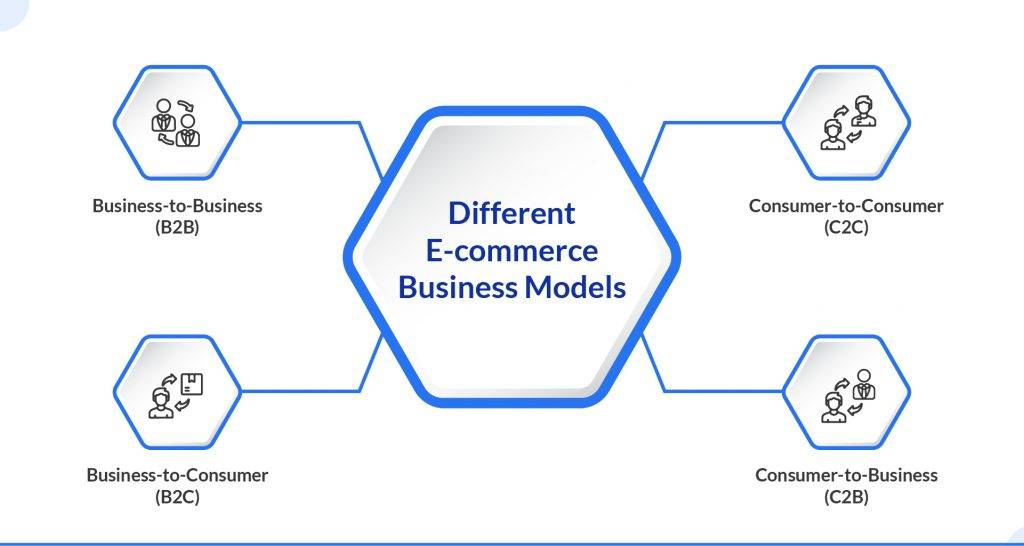
Selecting the right model depends on variables like your target audience, type of product, and geographic location. Therefore, it is important to carefully assess each marketplace app development option and select the one that best fits your business strategy.
Step #4: Rolling Out Your Marketplace's Minimum Viable Product (MVP)
An MVP is a version of a marketplace that includes only key features required to satisfy new customers and gather feedback for future development. By launching a marketplace MVP, you can test your marketplace in a real-world setting without committing excessive time or resources. It is all about finding the balance between functionality and simplicity.
Your MVP should offer value to your users while keeping the complexity at a minimum. Focus on the essential features that enable core transactions like product listings, search functionalities, a user-friendly shopping cart, and a secure checkout process.
Once you launch your MVP, the next step is to gather feedback through surveys, reviews, and support channels. This involves listening to your users, understanding their needs, and learning from their experiences. User feedback is valuable in improving and refining your marketplace software development process as it offers insights into what works, what does not, and what can be improved.
Iterating based on feedback is what makes an MVP so powerful. It allows you to make continuous improvements to your marketplace, ensuring it meets the needs of your users and stays ahead of the competition.
Step #5: Attracting Vendors and Customers to Your Marketplace
Another important step in your journey to build an E-commerce marketplace is attracting sellers and engaging customers. A marketplace thrives on its community, and building a balanced market with a good variety of products is crucial.
Attracting Sellers
- Competitive Advantage: Offer commission rates that are attractive compared to competitors. Focus on offering lower transaction fees and listing fees.
- Easy Listings: Implement an easy listing process that makes it convenient for vendors to upload their products.
- Frictionless Onboarding: Streamline the seller registration and product listing process for a seamless experience.
- Marketing and Seller Support: Develop targeted marketing campaigns to attract the first sellers within your niche. Provide ongoing support to ensure their success on your platform.
Engaging Customers
- Seamless User Experience: Prioritize a user-friendly interface with intuitive navigation and robust search functionalities to drive marketplace growth.
- Compelling Product Mix: Include a diverse range of high-quality products across your chosen categories to cater to a broad customer base.
- Competitive Pricing: Encourage sellers to offer competitive prices to attract buyers and create a reputation as the go-to place for great deals.
- Customer Service: Create a robust customer support system to address any questions or queries that your target audience might have.
Attracting vendors and customers is an ongoing process. Regularly review and improve your strategies to build a vibrant retail marketplace.
Step #6: Launching Your E-commerce Marketplace
Here is a step-by-step guide on how to launch your marketplace:
- Website Design: The design and usability of your marketplace are crucial for attracting and retaining users. The website should be visually attractive, simple to use, and embody your brand’s identity. Investing in a user-friendly E-commerce website design with high-quality product imagery and accurate product descriptions is essential.
- Payment Gateway Integration: A secure and efficient payment gateway is essential for any E-commerce marketplace. Integrate a gateway that offers multiple payment options for buyer convenience. You can consider working with a reliable payment processor to ensure secure transactions and develop trust with your users.
- Logistics Setup: Managing the delivery of products is another critical aspect. Determine your fulfillment strategy and analyze if you will manage logistics yourself or partner with third party logistics providers. Evaluate options that balance efficiency and cost-effectiveness for both your marketplace and the sellers.
- Product Pricing: Pricing your products right is key to attracting customers and vendors. Flipkart Commerce Cloud offers a dynamic pricing software that comes with a highly customizable rule engine. It accepts inputs regarding targets and guardrails to customize the optimal pricing strategy for your E-commerce business. This simplifies the management of multiple categories and hundreds of thousands of SKUs, aiding in the maximization of profit margins and market expansion.
Test all functionalities before going live to ensure a smooth user experience across all platforms (desktop and mobile). Conduct a controlled launch to identify and address any last-minute glitches.
Step #7: Marketing Your E-commerce Marketplace Effectively
Once you have launched your marketplace, the next step is creating a compelling marketing strategy. It should outline your marketing goals, the strategies you will use, and the KPIs (Key Performance Indicators) to measure. Continuously assessing and modifying your plan according to these KPIs can help ensure the effectiveness of your marketing activities.
Here are the different marketing strategies you might consider.
- Content Marketing and SEO: Develop high-quality content that educates potential sellers about the benefits of joining your marketplace and informs buyers about the unique value proposition you offer. You can use educational blogs and articles to establish your platform as a reliable information source. Leverage Search Engine Optimization (SEO) best practices like keyword research and technical SEO to improve your ranking in search engine results organically.
- Social Media Marketing: Harness the power of social media platforms to develop a better connection with your audience. Run targeted ad campaigns and encourage organic engagement through informative and engaging content.
- Monitor KPIs: Set key performance indicators (KPIs) to track the success of your marketing efforts. Analyze website traffic, user engagement, and conversion rates to identify what’s working and adapt your strategy accordingly.
- Promotional Discounts: Promotional offers can play a significant role in attracting initial users. Offering discounts or special deals can entice users to try out your marketplace and can lead to word-of-mouth promotion.
